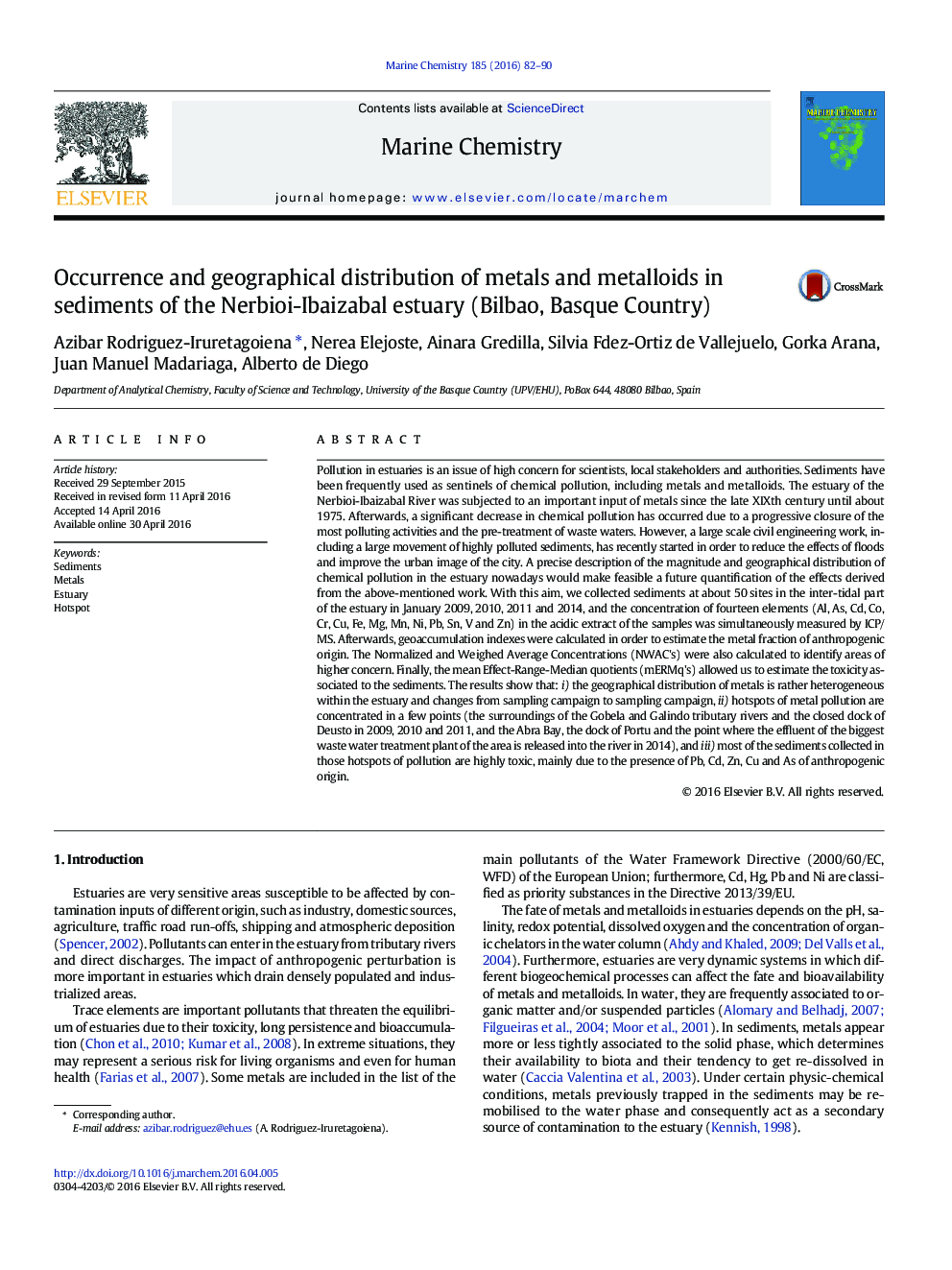| کد مقاله | کد نشریه | سال انتشار | مقاله انگلیسی | نسخه تمام متن |
|---|---|---|---|---|
| 1263148 | 1496651 | 2016 | 9 صفحه PDF | دانلود رایگان |
Pollution in estuaries is an issue of high concern for scientists, local stakeholders and authorities. Sediments have been frequently used as sentinels of chemical pollution, including metals and metalloids. The estuary of the Nerbioi-Ibaizabal River was subjected to an important input of metals since the late XIXth century until about 1975. Afterwards, a significant decrease in chemical pollution has occurred due to a progressive closure of the most polluting activities and the pre-treatment of waste waters. However, a large scale civil engineering work, including a large movement of highly polluted sediments, has recently started in order to reduce the effects of floods and improve the urban image of the city. A precise description of the magnitude and geographical distribution of chemical pollution in the estuary nowadays would make feasible a future quantification of the effects derived from the above-mentioned work. With this aim, we collected sediments at about 50 sites in the inter-tidal part of the estuary in January 2009, 2010, 2011 and 2014, and the concentration of fourteen elements (Al, As, Cd, Co, Cr, Cu, Fe, Mg, Mn, Ni, Pb, Sn, V and Zn) in the acidic extract of the samples was simultaneously measured by ICP/MS. Afterwards, geoaccumulation indexes were calculated in order to estimate the metal fraction of anthropogenic origin. The Normalized and Weighed Average Concentrations (NWAC's) were also calculated to identify areas of higher concern. Finally, the mean Effect-Range-Median quotients (mERMq's) allowed us to estimate the toxicity associated to the sediments. The results show that: i) the geographical distribution of metals is rather heterogeneous within the estuary and changes from sampling campaign to sampling campaign, ii) hotspots of metal pollution are concentrated in a few points (the surroundings of the Gobela and Galindo tributary rivers and the closed dock of Deusto in 2009, 2010 and 2011, and the Abra Bay, the dock of Portu and the point where the effluent of the biggest waste water treatment plant of the area is released into the river in 2014), and iii) most of the sediments collected in those hotspots of pollution are highly toxic, mainly due to the presence of Pb, Cd, Zn, Cu and As of anthropogenic origin.
Journal: Marine Chemistry - Volume 185, 20 October 2016, Pages 82–90
